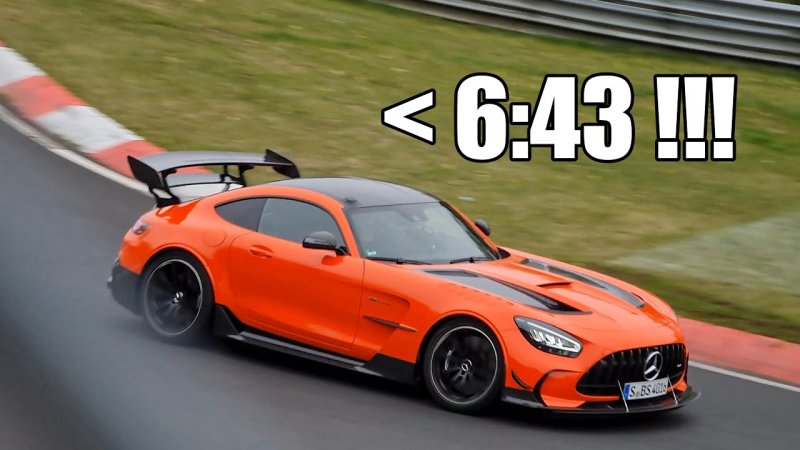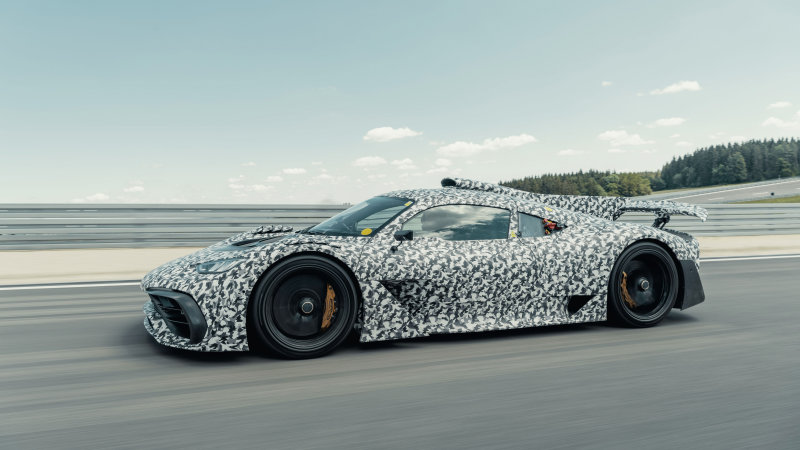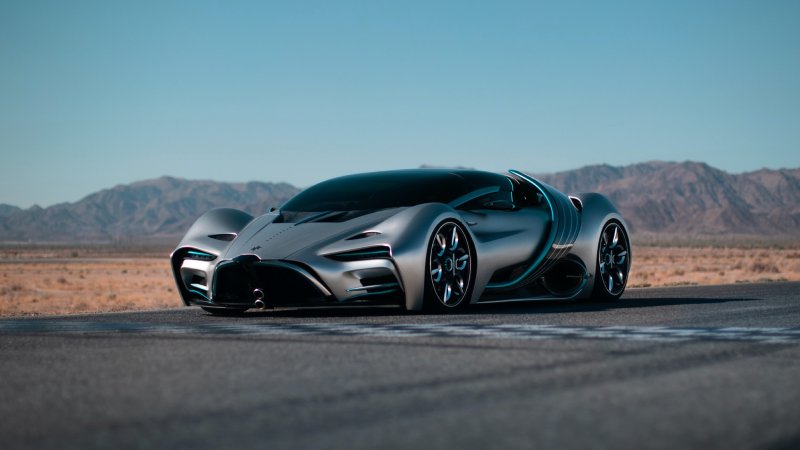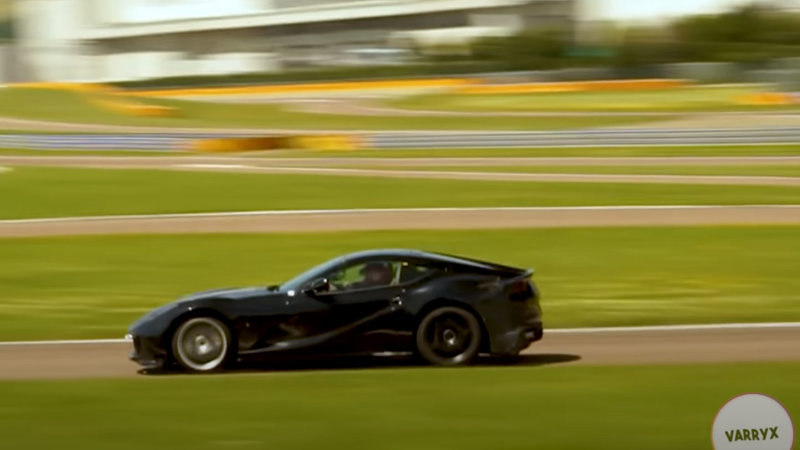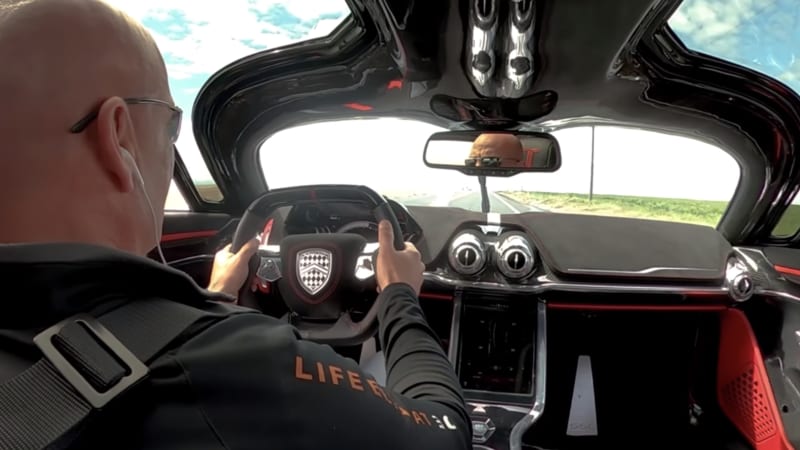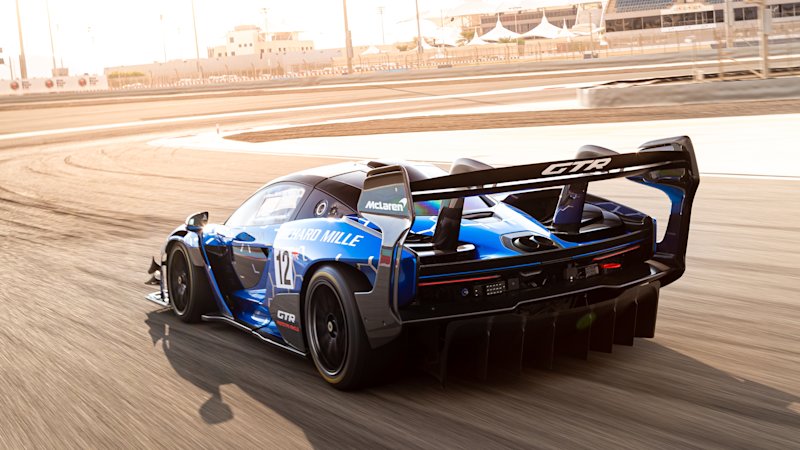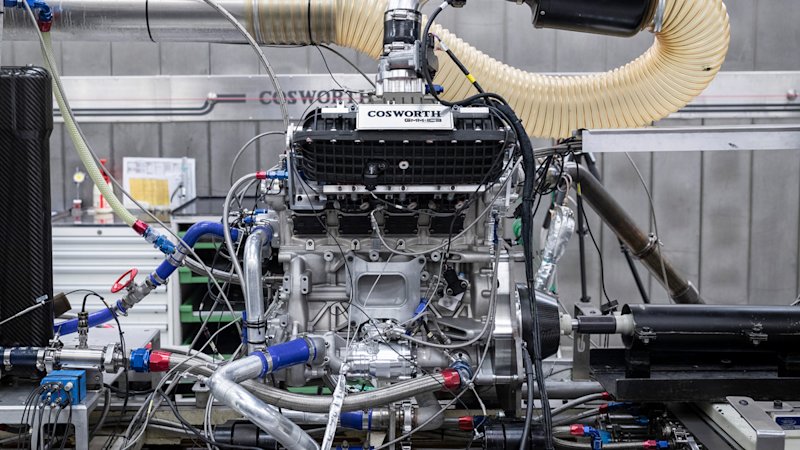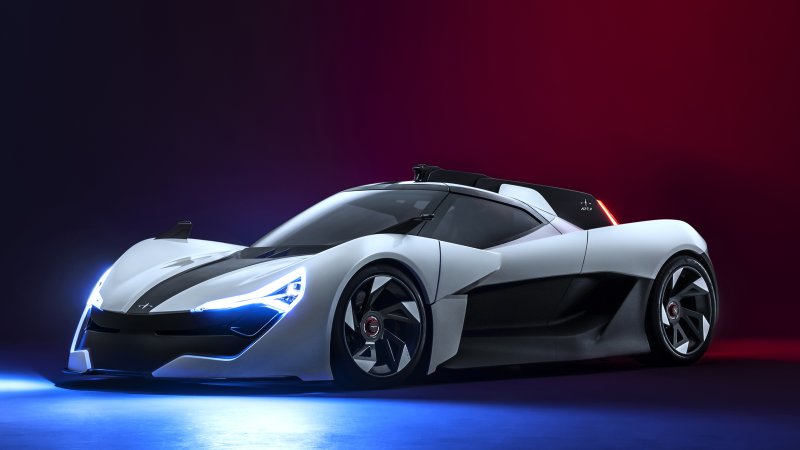Apex Motors sounds like a brand new name in the game, but the Hong-Kong-based company’s been around for more a few years and through a few transformations. In 2015 a maverick outfit of car designers banded together under the name Elemental to reveal the RP1, powered by 1.0-liter and 2.0-liter EcoBoost engines. By 2017, the 1,278-pound coupe could produce 2,205 pounds of downforce and was running Goodwood. By 2019, the Elemental RP1 had turned into the even-more-evolved Apex AP1, putting out 400 hp from a 2.3-liter EcoBoost four-cylinder and blitzing from 0 to 60 miles per hour in 2.5 seconds.
The brand new AP-0 is the follow-up. As the naming scheme suggests, it takes the top spot in the lineup ahead of the AP-1 by having battery-electric power, a single electric motor turning the rear axles with 649-hp and 427 pound-feet of torque, a 320-mile range on the WLTP cycle, and a 0-60 time of 2.3 seconds. Top speed is 190 mph.
Just as remarkable, and even more unusual for an EV, the whole package weighs 2,645 pounds. Compared to a McLaren 720S, the AP-0 is 4.5 inches shorter but 3.4 inches wider, and while the Apex gives up 61 hp and 131 lb-ft to the Englishman, the AP-0 weighs almost 500 pounds less than the 720S. Compared to performance EVs, the Apex weighs about 1,380 pounds less than a Tesla Model 3 Performance, 1,700 pounds less than a Rimac Concept 2, and almost 2,500 pounds less than a Porsche Taycan Turbo S.
The Apex packs a floor-mounted, 90-kWh lithium-ion battery that consumes 1,213 pounds of its curb weight. When plugged into the right CCS charger, the pack can refill 80% of its charge in 15 minutes; on a standard Type 2 charger, filling up from empty takes eight hours.
The chassis and bodywork is entirely carbon fiber, a central carbon tub and modular spaceframes laid on a rigid carbon spine connect the front to the rear. Outside, the Le Mans-like fin houses a retractable LIDAR system up front and a cross-shaped taillight in back. Built as a road-legal racer for gearheads and sitting just 3.7 inches off the ground, there’s an adjustable pushrod suspension with automatic ride-height adjustment, 14-inch carbon ceramic rotors with six-piston calipers in front and four-piston in the rear, and a pair of 19-inch center-lock wheels up front paired with 20-inchers in back.
Behind gullwing doors, the carbon, aluminum, and leather interior makes every occupant feel like a racer with a single-seater-style, reclined and feet-up seating position. Three displays for the driver sit atop the instrument panel behind a square steering wheel. To help drivers make the most of track days, Apex says the AP-0 can “gamify the way drivers can learn new racetracks and deliver the ultimate immersive racing experience” through augmented reality projection. The software-based “instructor” can be improved through over-the-air updates. To ensure the instructor knows what it’s talking about, Apex said it wants to build an FIA-approved race track, followed by a racing academy, around its Hong Kong HQ.
The ambitions only begin there. When off the track, that LIDAR unit is intended to provide Level 3 autonomous capability at launch, with the company saying Level 4 potential is already built in. More handily, the AP-0 will come with automatic emergency braking, adaptive cruise control, and lane keep assist. That’s all down the way, though, the AP-0 not scheduled to enter production until the latter half of 2022, costing around $195,000 for U.S. buyers. If all goes well from here to there, Apex plans to build up to 500 units per year in Britain, what it calls its second home, on the way to introducing a wider lineup of offerings.
Related Video:




